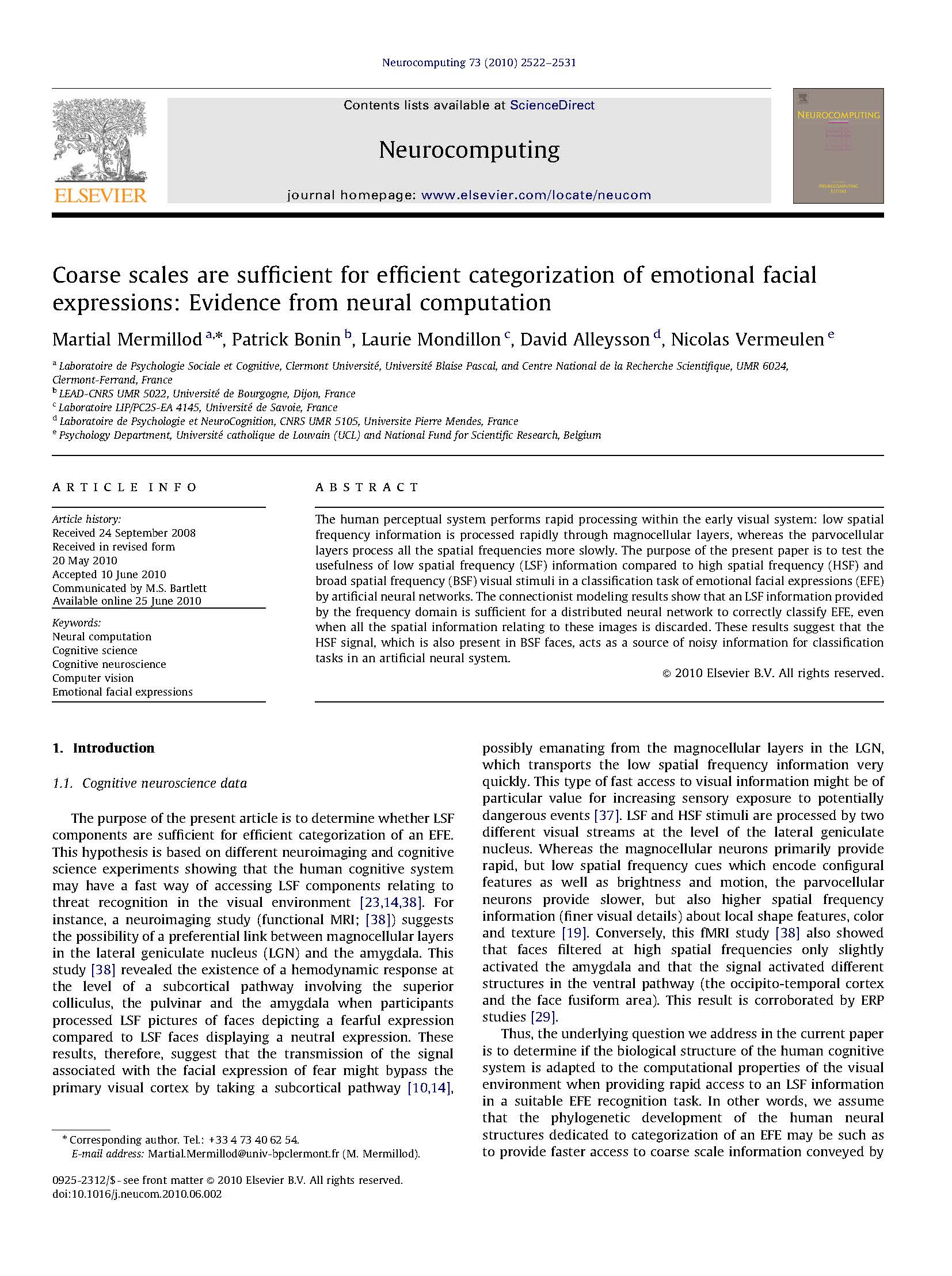The human perceptual system performs rapid processing within the early visual system: low spatial frequency information is processed rapidly through magnocellular layers, whereas the parvocellular layers process all the spatial frequencies more slowly. The purpose of the present paper is to test the usefulness of low spatial frequency (LSF) information compared to high spatial frequency (HSF) and broad spatial frequency (BSF) visual stimuli in aclassification task of emotional facial expressions (EFE) by artificial neural networks. The connectionist modeling results show that an LSF information provided by the frequency domain is sufficient for a distributed neural network to correctly classify EFE, even
when all the spatial information relating to these images is discarded. These results suggest that the HSF signal, which is also present in BSF faces, acts as a source of noisy information for classification tasks in an artificial neural system.
Coarse scales are sufficient for efficient categorization of emotional facial expressions: Evidence from neural computation
